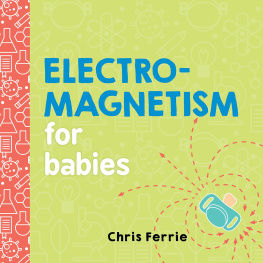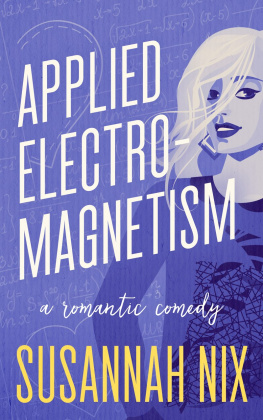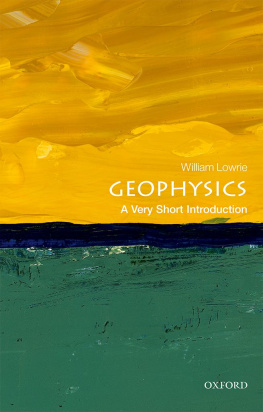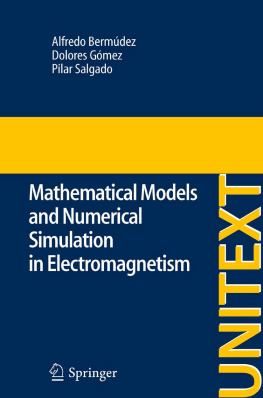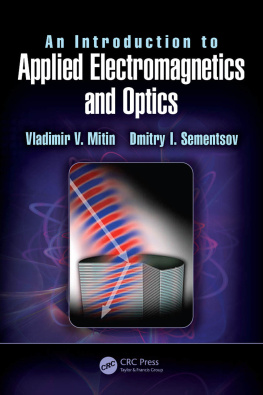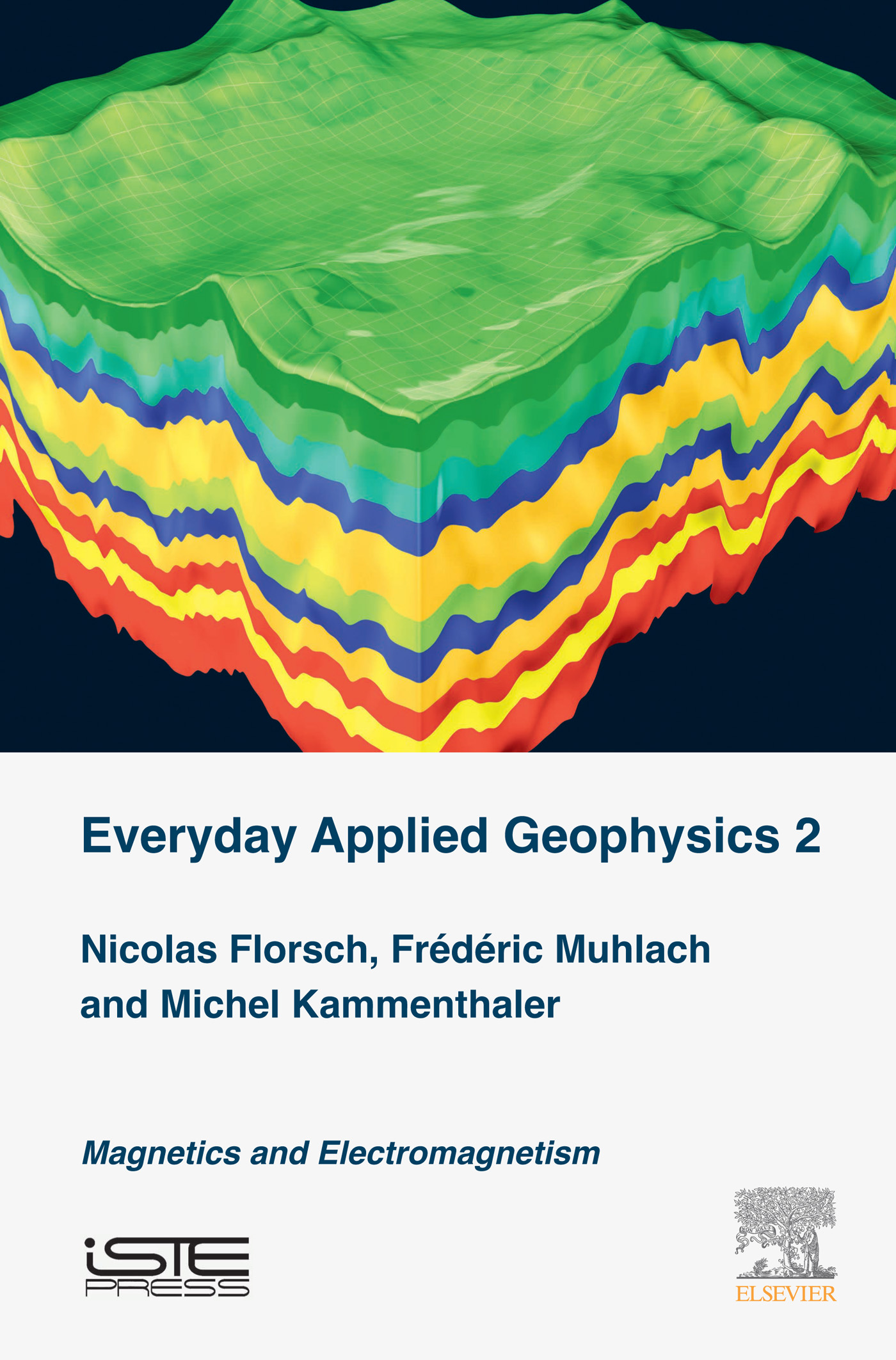Everyday Applied Geophysics 2
Magnetics and Electromagnetism
Nicolas Florsch
Frdric Muhlach
Michel Kammenthaler
Series Editor
Andr Mariotti


Copyright
First published 2018 in Great Britain and the United States by ISTE Press Ltd and Elsevier Ltd
Apart from any fair dealing for the purposes of research or private study, or criticism or review, as permitted under the Copyright, Designs and Patents Act 1988, this publication may only be reproduced, stored or transmitted, in any form or by any means, with the prior permission in writing of the publishers, or in the case of reprographic reproduction in accordance with the terms and licenses issued by the CLA. Enquiries concerning reproduction outside these terms should be sent to the publishers at the undermentioned address:
ISTE Press Ltd
2737 St Georges Road
London SW19 4EU
UK
www.iste.co.uk
Elsevier Ltd
The Boulevard, Langford Lane
Kidlington, Oxford, OX5 1GB
UK
www.elsevier.com
Notices
Knowledge and best practice in this field are constantly changing. As new research and experience broaden our understanding, changes in research methods, professional practices, or medical treatment may become necessary.
Practitioners and researchers must always rely on their own experience and knowledge in evaluating and using any information, methods, compounds, or experiments described herein. In using such information or methods they should be mindful of their own safety and the safety of others, including parties for whom they have a professional responsibility.
To the fullest extent of the law, neither the Publisher nor the authors, contributors, or editors, assume any liability for any injury and/or damage to persons or property as a matter of products liability, negligence or otherwise, or from any use or operation of any methods, products, instructions, or ideas contained in the material herein.
MATLAB is a trademark of The MathWorks, Inc. and is used with permission. The MathWorks does not warrant the accuracy of the text or exercises in this book. This books use or discussion of MATLAB software or related products does not constitute endorsement or sponsorship by The MathWorks of a particular pedagogical approach or particular use of the MATLAB software.
For information on all our publications visit our website at http://store.elsevier.com/
ISTE Press Ltd 2018
The rights of Nicolas Florsch, Michel Kammenthaler and Frdric Muhlach to be identified as the authors of this work have been asserted by them in accordance with the Copyright, Designs and Patents Act 1988.
British Library Cataloguing-in-Publication Data
A CIP record for this book is available from the British Library
Library of Congress Cataloging in Publication Data
A catalog record for this book is available from the Library of Congress
ISBN 978-1-78548-280-9
Printed and bound in the UK and US
Foreword
Andr Mariotti, Emeritus Professor at the Universit Pierre-et-Marie-Curie, Honorary member of the Institut Universitaire de France
The scientific books published by ISTE Press include a multidisciplinary series called Earth Systems Environmental Sciences , and it is in this context that today I present a work dedicated to geophysical prospecting and its applications, coordinated by Professor Nicolas Florsch.
Its title, Everyday Applied Geophysics , deserves to be explained in more detail.
First, we should recall the important role played in some scientific fields by the so-called amateurs. This is especially the case for astronomy, a field where a socioepistemology of amateur practices, whose main points can be summed up here, has been established. These amateurs are not organized to compete with professionals, as they evidently lack the skills and the necessary resources. However, this is not a case of popular science: their practices, beyond the understanding of the sky, stars and the universe, are active and mobilized by the desire to make discoveries. Astronomy is a science where amateurs can obtain significant observation data, which are very useful for scientists.
On a smaller scale, some amateurs, for example, are quite involved in electronics and radio communication.
However, so far this has not been the case for Everyday Applied Geophysics, a domain that has potentially numerous applications associated with the exploration of the near subsoil: looking for water, archeological remains, geological peculiarities, etc.
Moreover, making Everyday Applied Geophysics available for researchers based in developing countries is a challenge of the utmost importance.
The goal is to open this field and allow everyone to employ the tools and methods used for exploring the near subsoil in order to highlight reservoirs or flow paths, locate holes, define geological stratifications, follow pollution plumes, search for archeological remains, etc. If curious and exploring amateurs may be involved, the main objective of the scientific community of these countries, which needs financially and technologically affordable tools, is to implement cheap and unsophisticated methods and techniques that, nonetheless, will produce plenty of essential data.
Let us provide an example to illustrate this point. Some geophyscal devices cost up to tens of thousands of dollars (or euros) on the market; in this work, we will discover that with a few hundred euros, or even less, we can implement a system that, despite being naturally lower in terms of data acquisition, allows everyone to carry out actual and effective subsurface geophysical prospection.
This work will also focus on the issue of self-learning. The existing literature does not tackle practical aspects either in terms of material implementation or basic interpretation concepts (actual resolution of the methods, sensitivity, etc.). This work is also very useful insofar as it can solve the problem of signal acquisition: it provides open-source Arduino solutions, supported by a downloadable program, for data acquisition in the field.
Thus, this work, which is unique in its genre and accessible to everyone (with a few more technical and/or mathematical boxed passages), bridges a double gap in the existing scientific literature by:
- providing accessible tools for the exploration of the near subsoil: from tools to acquisition systems (the latter being available with the use of computers) including a guide of free programs;
- providing practical information for implementation that cannot be found in other works, such as the design of devices (from electrodes to current flow, for example to carry out an electrical survey), the protocol for the creation of geophysical maps, etc.
We hope that this work reaches its audience and that the scientists that played a part in it may thus contribute to the removal of the ideological barrier between the world of basic research carried out in the academic world and applied research, as the markedly ideological gap that divides these two communities has not been entirely bridged yet. Besides, helping the development of the environmental field should be invaluable for a large number of countries.



